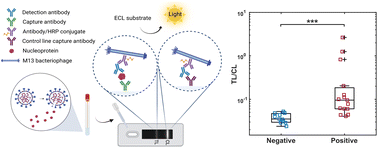小児急性骨髄性白血病は、一部の子どもで治療抵抗性を示すことがありますが、UCサンディエゴの研究者は、その理由を明らかにしたと考えています。 In some children, pediatric acute myeloid leukemia can become resistant to treatment; UC San Diego researchers think they now know why.
2023-03-07 カリフォルニア大学サンディエゴ校(UCSD)
彼らは、遺伝子の指示をタンパク質に変換する過程の一部であるスプライシングの非正常化につながる治療的脆弱性を特定し、スプライシング阻害剤であるRebecsinibが有効であることを示しました。Rebecsinibは、多発性の癌、特に白血病における治療耐性の原因となるADAR1 p150というタンパク質の癌性ハイパーエディットを逆転する実験薬です。これらの研究成果は、治療に耐性を持つ小児AMLの幹細胞や、このスプライシング非正常化の影響を受けた他のがん幹細胞を検出して治療する新しいアプローチを提供しています。
pAMLは、骨髄が異常な血液細胞を大量に作り出すタイプの白血病であり、原因は完全には分かっていません。一部の遺伝子異常がリスク因子として特定されています。治療方法は大幅に進歩しており、今日では75%の子供たちが生存していますが、生存率は包括的な診断、集中治療、効果的な支援ケアに依存します。
<関連情報>
- https://today.ucsd.edu/story/splicing-deregulation-detected-and-targeted-in-type-of-childhood-leukemia
- https://www.cell.com/cell-reports-medicine/fulltext/S2666-3791(23)00054-X
- https://www.cell.com/cell-stem-cell/fulltext/S1934-5909(23)00008-5
小児急性骨髄性白血病幹細胞におけるスプライシング制御異常の検出と標的化 Detection and targeting of splicing deregulation in pediatric acute myeloid leukemia stem cells
Inge van der Werf,Phoebe K. Mondala,S. Kathleen Steel,Larisa Balaian,Luisa Ladel,Cayla N. Mason,Raymond H. Diep,Jessica Pham,Jacqueline Cloos,Gertjan J.L. Kaspers,Warren C. Chan,Adam Mark,James J. La Clair,Peggy Wentworth,Kathleen M. Fisch,Leslie A. Crews,Thomas C. Whisenant,Michael D. Burkart,Mary E. Donohoe,Catriona H.M. Jamieson
Cell Reports Medicine Published:March 07, 2023
DOI:https://doi.org/10.1016/j.xcrm.2023.100962

Highlights
•Pediatric acute myeloid leukemia stem cells harbor increased exon skipping events
•Decreased RBFOX2 induces embryonic splicing and CD47 splice isoform upregulation
•Lentiviral splicing reporter studies show exon skipping reversal with Rebecsinib
•Rebecsinib inhibits pediatric acute myeloid leukemia stem cell propagation
Summary
Pediatric acute myeloid leukemia (pAML) is typified by high relapse rates and a relative paucity of somatic DNA mutations. Although seminal studies show that splicing factor mutations and mis-splicing fuel therapy-resistant leukemia stem cell (LSC) generation in adults, splicing deregulation has not been extensively studied in pAML. Herein, we describe single-cell proteogenomics analyses, transcriptome-wide analyses of FACS-purified hematopoietic stem and progenitor cells followed by differential splicing analyses, dual-fluorescence lentiviral splicing reporter assays, and the potential of a selective splicing modulator, Rebecsinib, in pAML. Using these methods, we discover transcriptomic splicing deregulation typified by differential exon usage. In addition, we discover downregulation of splicing regulator RBFOX2 and CD47 splice isoform upregulation. Importantly, splicing deregulation in pAML induces a therapeutic vulnerability to Rebecsinib in survival, self-renewal, and lentiviral splicing reporter assays. Taken together, the detection and targeting of splicing deregulation represent a potentially clinically tractable strategy for pAML therapy.
レベクシニブによる悪性腫瘍ADAR1スプライスアイソフォームスイッチングの逆転現象 Reversal of malignant ADAR1 splice isoform switching with Rebecsinib
Leslie A. Crews,Wenxue Ma,Luisa Ladel,Jessica Pham,Larisa Balaian,S. Kathleen Steel,Phoebe K. Mondala,Raymond H. Diep,Christina N. Wu,Cayla N. Mason,Inge van der Werf,Isabelle Oliver,Eduardo Reynoso,Gabriel Pineda,Thomas C. Whisenant,Peggy Wentworth,James J. La Clair,Qingfei Jiang,Michael D. Burkart,Catriona H.M. Jamieson
Cell Stem Cell Published:February 16, 2023
DOI:https://doi.org/10.1016/j.stem.2023.01.008

Highlights
•ADAR1p150 isoform-mediated A-to-I RNA editing fuels human LSC generation
•Lentiviral ADAR1 and splicing reporters enable detection of ADAR1p150 activation
•Rebecsinib inhibits ADAR1p150-driven LSC self-renewal while sparing normal HSCs
•Rebecsinib pre-IND studies show scalable chemistry and favorable pharmacokinetics
Summary
Adenosine deaminase acting on RNA1 (ADAR1) preserves genomic integrity by preventing retroviral integration and retrotransposition during stress responses. However, inflammatory-microenvironment-induced ADAR1p110 to p150 splice isoform switching drives cancer stem cell (CSC) generation and therapeutic resistance in 20 malignancies. Previously, predicting and preventing ADAR1p150-mediated malignant RNA editing represented a significant challenge. Thus, we developed lentiviral ADAR1 and splicing reporters for non-invasive detection of splicing-mediated ADAR1 adenosine-to-inosine (A-to-I) RNA editing activation; a quantitative ADAR1p150 intracellular flow cytometric assay; a selective small-molecule inhibitor of splicing-mediated ADAR1 activation, Rebecsinib, which inhibits leukemia stem cell (LSC) self-renewal and prolongs humanized LSC mouse model survival at doses that spare normal hematopoietic stem and progenitor cells (HSPCs); and pre-IND studies showing favorable Rebecsinib toxicokinetic and pharmacodynamic (TK/PD) properties. Together, these results lay the foundation for developing Rebecsinib as a clinical ADAR1p150 antagonist aimed at obviating malignant microenvironment-driven LSC generation.


